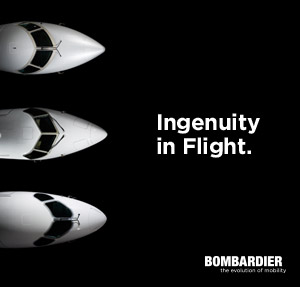Embraer’s Phenom 100 Executive Jet is Certified by Brazil?s ANAC
Written by thomas · Filed Under Aeronautics NewsDecember 9, 2008
U.S. certification expected shortly, followed by first deliveries
São José dos Campos, December 9, 2008 – Embraer’s Phenom 100 entry level executive jet received its Type Certificate
from Brazil’s National Civil Aviation Authority (Agência Nacional de Aviação
Civil – ANAC), in a ceremony held today at Embraer headquarters, in São José dos
Campos, Brazil. “In 2005, we promised to design and build a revolutionary jet with premium comfort, outstanding performance, docile flying qualities, and a low operating cost,” said
Luís Carlos Affonso, Embraer Executive Vice President, Executive Jets. “We have
relentlessly pursued these design goals and, now, I am thrilled to announce that the
Phenom 100 has not only met all original specification targets, but has also surpassed
several performance goals.”
“This certification makes all of us at Embraer very proud. The Phenom 100 was conceived,
developed, and certified in less than four years, which is very noteworthy,” said Emilio
Matsuo, Embraer’s Senior Vice President, Engineering. “Furthermore, the performance
figures obtained demonstrate the product’s excellent design.”
The Phenom 100’s maximum range, originally projected to be 1,160 nautical miles (2,148
kilometers or 1,335 miles), has been extended to 1,178 nautical miles (2,182 kilometers or
1,356 miles) with four occupants and NBAA IFR reserves. An optional enhanced take-off
performance package was included in the aircraft certification, resulting in a 3,125 feet take-off
field length at maximum take-off weight. The standard take-off field length is 3,400 feet as
initially specified. For departures from airports with restrictions due to high temperatures or
high elevations, or both, take-off climb performance has also surpassed the design target,
providing up to 300 nautical miles extra range. Another performance improvement was
achieved with the landing distance, verified to be only 2,699 feet at maximum landing weight,
301 feet shorter than initially specified. Powered by two fuel-efficient Pratt & Whitney Canada
PW617F-E engines, the Phenom 100’s fuel consumption is confirmed to be better than originally
estimated, saving as much as 3.6% on longer trips.
The flight test campaign also validated the Phenom 100’s top speed of 390 knots (true air
speed), 10 knots faster than initially projected. The aircraft is capable of climbing directly to its
maximum cruise altitude of 41,000 feet, even at maximum take-off weight. Certified without
restrictions, the Phenom 100 is able to fly under Visual and Instrument Flight Rules conditions,
day or night, and into known or forecasted icing conditions. The aircraft also operates well
within Stage IV external noise requirements, establishing by International Civil Aviation
Organization (ICAO), having been certified with a cumulative margin of 33 EPNdB.
The highly intuitive Phenom100 man-machine interface, based on a quiet and dark cockpit
philosophy that offers full situational awareness and automation for a low workload, enabled
the certification for single-pilot operation. The Phenom 100’s Prodigy® flight deck, based on
the acclaimed Garmin G1000 avionics suite, was also certified.
The interior of the Phenom 100 was certified with its innovative features and collections of
finishing materials. The Oval Lite cross-section benefits passengers with greater space and
comfort, enhanced by an abundance of natural light from the largest windows in the entry level
category. In addition, the forward wardrobe and private rear lavatory with storage space add
convenience for a premium travel experience.
(L-R) Antônio Carlos Vieira Victorazzo, Embraer Vice-President, Product Integrity, Hélio Tarquinio Júnior, General Manager of Aviation Product of ANAC, and Luís Carlos Affonso, Executive Vice-President, Executive Jets during the Phenom 100 certificate ceremony.
 Embraer and ANAC teams
Embraer and ANAC teams
“We congratulate all Embraer teams and our partners, who made this best-in-class jet a
reality, in such record-breaking time,” said Affonso. “Embraer’s hundreds of employees
involved in the Phenom 100 program can be proud of having achieved, and even
surpassed, the jet’s challenging design goals. This achievement goes well beyond the
certification of an aircraft. It represents a major building block for the future of
Embraer Business Aviation.”
Embraer’s Executive Jets Customer Support and Services organization is ready for the Phenom
100 to enter service. Four new Embraer Executive Jets service centers were recently
inaugurated in the U.S. and Europe. The entire network will be comprised of seven whollyowned
and 38 authorized service centers, worldwide Phenom 100 Basic Structural and Operational Weights.
About the Phenom 100
Premium comfort, outstanding performance and low operating costs are key design drivers of the
Phenom 100 best-in-class jet. The aircraft will offer pilots and passengers comfort and style
previously unknown in its category. Developed in partnership with BMW Group Designworks
USA, the innovative interior design and relaxing ambience are enhanced by generous windows and
the most ample cabin in its class.
The pilot-friendly cockpit and docile flying qualities of the new aircraft enable single-pilot
operation. Drawing on Embraer’s engineering experience, the Phenom 100 is designed for high
utilization and availability. For added safety and reliability, the jet will offer a standard anti-skid
brake-by-wire system.
The Phenom 100 was introduced by Embraer, in 2005, and is the most comfortable business jet in
the entry level category, accommodating four passengers in the club seat configuration. The rear
baggage compartment has a capacity of 55 cubic feet (1.56 cubic meters), which is sufficient for
transporting golf and ski bags and equipment. Additional storage space in the aircraft nose and
interior wardrobes add up to 16 cubic feet (0.45 cubic meters), totaling 71 cubic feet (2.01 cubic
meters) throughout the jet.
Based on Garmin’s all-glass, fully-integrated avionics suite, the Prodigy® flight deck offers
Phenom jet operators more advantages than any other avionics suite on today’s market. The cockpit features three interchangeable 12-inch displays – two Primary Flight Displays (PFD) and one Multi-Function Display (MFD). The system integrates all primary flight, navigation, communication,terrain, traffic, weather, engine instrumentation, and crew-alert data, and presents the composite
information on these three brilliant, sunlight-readable color high definition screens.
Two Pratt & Whitney Canada PW617F-E engines power the jet, with 1,695 pounds of thrust each.
Its range with four occupants is 1,178 nautical miles (2,182 kilometers or 1,356 miles) with NBAA
IFR reserves (35 minutes of holding and 100 nm alternate). The aircraft is capable of flying at
41,000 feet (12,497 meters), attainable with a direct climb, even fully loaded. In addition, the
Phenom 100 is designed to perform short-field takeoffs or landings and to fly at a maximum cruise
speed of Mach 0.70, or 390 knots (true air speed). These characteristics allow customers to fly
nonstop from New York to Miami, and from Los Angeles to Vancouver or Denver at a lower cost
than competitive aircraft, including turboprops.
As of January 5, 2009, the Phenom 100 will be priced at US$ 3.18 million for FAA certification,
and US$ 3.25 million for ANAC certification, both based on January 2005 economic conditions for
a baseline configuration. Brought to January 2009 economic conditions, the price will be US$ 3.6
million for FAA certification and US$ 3.68 million for ANAC and EASA certifications, subject to
escalation until delivery.
The Phenom 100 jet, together with the Phenom 300, received the IF Award, in Germany, as the best
product, in 2006, and the best interior, in 2007, as well as the Good Design Award, in China, for the
best project, in 2006. In May 2008, the editors of Robb Report magazine, in the U.S., voted the
Phenom 100 the “Best of the Best” Business Jet.
Weights Phenom 100 Standard Configuration
Maximum Ramp 10,516 lb 4,770 kg
Maximum Take-Off 10,472 lb 4,750 kg
Maximum Landing 9,766 lb 4,430 kg
Maximum Zero Fuel 8,444 lb 3,830 kg
Basic Operating (*) (**) 7,132 lb 3,235 kg
Useful Load 3,384 lb 1,535 kg
Maximum Payload (**) 1,312 lb 595 kg
Maximum Usable Fuel (***) 2,804 lb 1,272 kg
(*) Considering one crew member (200lb or 91kg)
(**) Weights may vary according to optional equipment installed or interior layouts
(***) Adopted fuel density is 6.70 lb/U.S. gal. (0.803 kg/l)
» Próximo Post - La División de Aviones de Transporte Militar de EADS recibe Acreditación de Procesos (CMMI) para su Software Embarcado
« Post Aneterior - Sky Shuttle Helicopters Takes Delivery Of The 200th AW139
Comments
¿Tiene algo que decir?
You must be logged in to post a comment.








